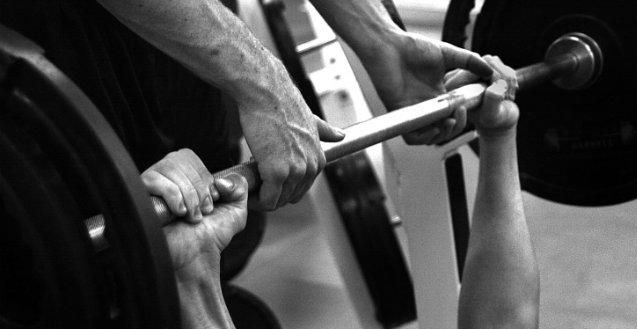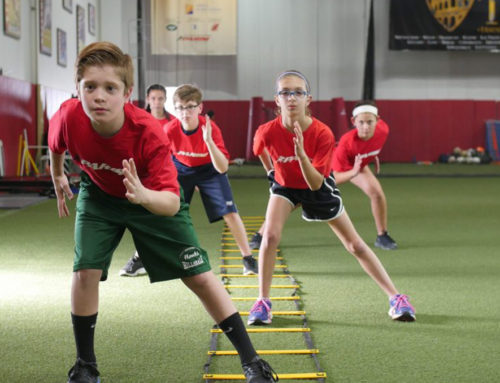By: Scott Hobbs, CPT
Very few people seem focused on getting strong anymore.
This isn’t just limited to the general public, it extends to college/high school athletes, and even professional athletes. Naturally this isn’t the case everywhere (there are some great coaches and programs around) but it seems to be the trend in many settings.
The commercial gym environment has been broken by “functional” training methods, body-pump(and similar) classes, typical body-bulding routines (done with zero focus/intent by people who are a million miles away from being body-builders), and the ‘wrap them in cotton wool’ approach of so many personal trainers.
Even the training of professional, collegiate, and high school athletes has been affected by coaches with a poor understanding of exercise science and an unhealthy obsession with the newest ‘fad’ training style (for example solely using crossfit-like high density programing for the training of non-crossfit athletes).
In general there seems to be a tendency to provide “entertrainment” for our athletes/clients (always do something different each session, use every piece of equipment available [etc]) rather than sticking to what actually works – lifting heavy implements (predominantly barbells) and progressive overload. It’s not sexy, it often hurts, and it requires focus – but it works, and is has done since the beginnings of recorded history in ancient Greece.
Why train to be strong?
If you train to get strong you’ll look good, you’ll have better posture and be in less pain, you’ll be able to better perform physical tasks in sport, at work and at home, and you’ll feel million times more confident and better about yourself. Differentiate yourself from the masses (the people you see at the gym, at work, or at the doctors surgery) – stop being weak.
“Strength is the foundation of athleticism.”
“Maximal strength is the ability to exert maximal force on an object.”
Athletes, by being strong you will perform better in your sport. This was demonstrated in 1991 by Fry and Kraemer who studied several hundred division 1, division 2, and division 3 (American) football players including both offensive and defensive positions. Measures of strength and power clearly followed a continuum of the better players (D1) being stronger and more powerful, and the lower levels (D2 and D3) less so. Having greater levels of maximal strength will (after a short lag-time for transfer of training effect) allow you to generate force faster due to increased power (force x velocity). Put simply, power is strength displayed quickly. Power is a defining factor in sporting performance – power is essential to jump, throw, kick, punch, lift, sprint, and rapidly change direction. Being stronger (being able to produce more force) increases your capacity to be more powerful (athletic). I like the analogy that you’re basically increasing the size of your glass (see image below).
Strength is the glass, power is the water. The bigger the glass, the more water it can hold.
Strength is the glass, power is the water. The bigger the glass, the more water it can hold.
How do I get stronger?
All the curls, tricep push downs, flyes, lateral raises, and crunches in the world will not get you strong – unless you’re a raw beginner. Heavy squats, bench presses, deadlifts, rows, presses, pull ups, and dips – these build strength. If, after 5×5 heavy back squats, you have the energy, motivation, and desire to do curls and crunches, then be my guest. But remember 80% of the results you get from that session will come from the 20% that you’ve already done.
Doing power based exercises (snatches, cleans, jerks, plyometrics) won’t build maximal strength (they’re limited by your ability to produce power and your technical ability), they refine it and transfer it to power/athleticism. Therefore if you lack strength in the first place, you’ll never get as powerful as someone who is already strong. Build a foundation of strength.
“But what about my stabiliser muscles?” Supporting a heavy bar will challenge your TvA/deep trunk musculature, rotator cuff, spinal erectors (etc.) in the way they’re supposed to work – in conjunction with each other as a unit. You may not feel a ‘burn’ like you do by isolating them and doing high repetition sets, but that isolationist approach (for healthy athletes) is inefficient and ineffective.
How strong is strong enough?
Having the necessary degree of strength to deal with the demands of your environment (be it sport, work, home) is considered the bare minimum. However your intention should be to exceed these demands and be prepared for any eventuality. For athletes – you need to be as strong as you can in order to develop the capacity to produce more power so you can dominate your competition and rise to the top of your sport. Providing the strength you’re developing is given time to transfer to your sport, then you are never too strong (Stone, Moir, Glaister, & Sanders, 2002).
Want To Learn More About Strength Training?
Schedule a complimentary training session!
References
Stone, M. H., Moir, G., Glaister, M., & Sanders, R. (2002). How much strength is necessary?. Physical Therapy in Sport, 3(2), 88-96.
Fry, A.C. and W.J. Kraemer, Physical performance characteristics of American collegiate football players. Journal of Applied Sports Science Research, 5(3): 126‐138, 1991.
http://www.elitefts.com/education/speed-vs-speed-strength/
http://www.nsca.com/education/videos/power_development_in_strength-power_athletes/





